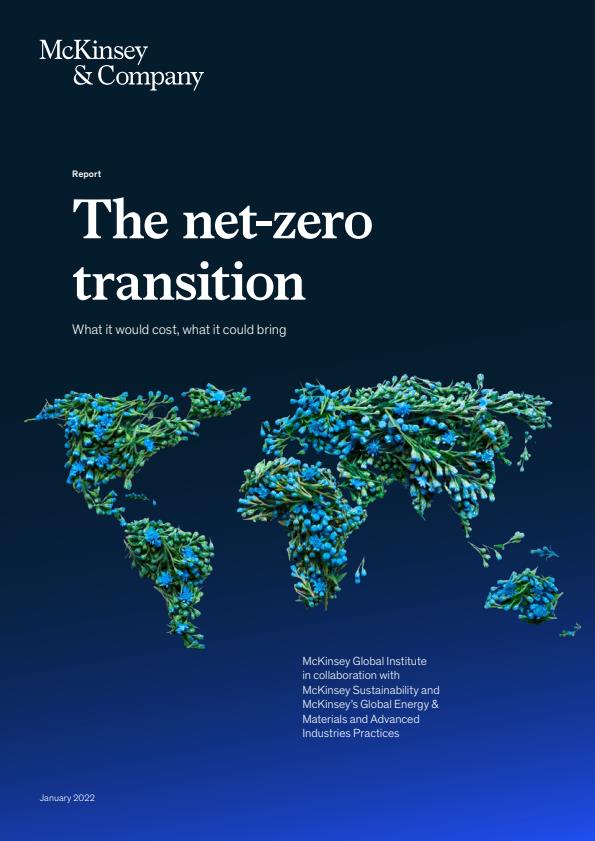To stabilize the climate and limit physical climate risks, climate science tells us that it is necessary to reduce the addition of greenhouse gases to the atmosphere to net zero (see sidebar “Physical risks will continue to build up until net zero is achieved”). Seven energy and land-use systems act as direct sources of global emissions. One system—forestry and other land use—also acts as a natural sink for carbon dioxide (CO2) and would need to increase its rate of emissions absorption. The systems and their emissions footprints are the following:
- Power, consisting of electricity and heat generation: 30 percent of CO2 emissions and 3 percent of nitrous oxide (N2O) emissions
- Industry, consisting of various industrial processes, including production of steel, cement, and chemicals, and extraction and refining of oil, gas, and coal: 30 percent of CO2 emissions, 33 percent of methane emissions, 8 percent of N2O emissions
- Mobility, consisting of road, aviation, rail, maritime, and other forms of transportation: 19 percent of CO2 emissions and 2 percent of N2O emissions
- Buildings, including heating and cooking: 6 percent of CO2 emissions
- Agriculture, consisting of direct on-farm energy use and emissions from agricultural practices and fishing: 1 percent of CO2 emissions, 38 percent of methane emissions, and 79 percent of N2O emissions
- Forestry and other land use, primarily land cover change: 14 percent of CO2 emissions, 5 percent of methane emissions, and 5 percent of N2O emissions
- Waste, consisting of solid waste disposal and treatment, incineration, and wastewater treatment: 23 percent of methane emissions and 3 percent of N2O emissions
Carbon dioxide in each case is emitted through the combustion of fossil fuels to produce energy (oil, gas, and coal), as well as through nonenergy emissions (for example, emissions associated with industrial processes like the reduction of iron ore to produce steel and with deforestation). Based on current accounting methodologies, energy-related emissions make up as much as 83 percent of CO2 emissions (exhibit). (This is based on the current system of emissions measurement, in which forestry emissions in particular are classified as net emissions, considering their role as both sources and sinks of greenhouse gases. Considering only their role as sources of emissions and accounting for second-order effects of deforestation would substantially increase the contribution of forestry as sources of emissions.)

Effective decarbonization actions include shifting the energy mix away from fossil fuels and toward zero-emissions electricity and other low-emissions energy carriers such as hydrogen; adapting industrial and agricultural processes; increasing energy efficiency and managing demand for energy; utilizing the circular economy; consuming fewer emissions-intensive goods; deploying carbon capture, utilization, and storage (CCS) technology; and enhancing sinks of both long-lived and short-lived greenhouse gases.
A key feature of any transition to net-zero emissions is its universality, across energy and land-use systems and throughout the global economy. This is for two reasons. First, each of these energy and land-use systems contributes substantially to emissions. Thus, every one of these systems will need to undergo transformation if the net-zero goal is to be achieved. Second, these systems are highly interdependent; actions to reduce emissions must take place in concert and at scale across systems, economic sectors, and geographies. For instance, electric vehicles are valuable only to the extent that low-emissions electricity production has been achieved. All sectors of the economy participate in these energy and land-use systems across global value chains. Similarly, all countries contribute to emissions, either directly or through their role in value chains. Reaching net-zero emissions will thus require a transformation of the global economy (see sidebar “Our research methodology: Sources, scenarios, limitations, and uncertainties”).




